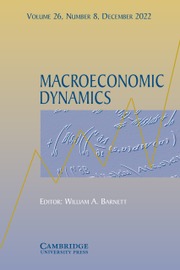No CrossRef data available.
Article contents
Unraveling the enigma: decomposing China’s output and productivity growth in the new era—insights from listed companies
Published online by Cambridge University Press: 10 January 2025
Abstract
Building upon recent developments in production function identification and decomposition methods, this paper investigates the sources of output and productivity growth among China’s listed manufacturing companies from 2000 to 2022. While previous studies on China’s manufacturing have predominantly focused on the period preceding 2007, our study extends the analysis to a broader timeframe and divide it into four sub-periods to accommodate diverse economic conditions and varying growth rates. We provide new insights into the Chinese economy during a period marked by gradual economic transformation. Specifically, we first decompose industry output growth into factor deepening and firm productivity progress within each sub-period. To account for heterogeneity across firms in terms of production technology and sources of growth, we employ a nonparametric production function and decompose firm output growth at both the mean and different quantiles of the output distribution. We find that increased materials usage and productivity growth are primary growth drivers. However, the contribution of productivity experiences a significant decline, particularly in recent years and among median-sized and large firms. Furthermore, we examine China’s industry aggregate productivity growth and its origins among state-invested, foreign-invested, and domestic private firms. Our findings suggest that reforms among state firms are the largest contributor to industry productivity growth before the 2008 financial crisis, whereas productivity progress of domestic private firms emerges as the sole significant driver in recent years. Additionally, there is no evidence of improvements in output reallocation efficiency within China’s manufacturing sector throughout our sample period.
Keywords
Information
- Type
- Articles
- Information
- Copyright
- © The Author(s), 2025. Published by Cambridge University Press

